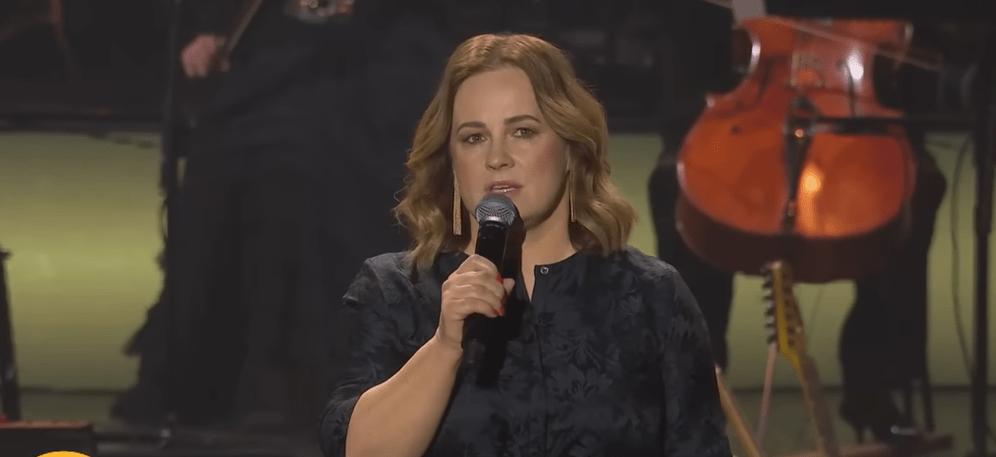As Poland considered Joanna Kołaczkowska’s life in recent months, it adopted a narrative of humor, resiliency, and inventiveness. Her comedic timing felt as accurate as the touch of a sculptor, but her laughter also contained layers of vulnerability that were incredibly powerful in building relationships.
She forged a distinct career by fusing professional rigor with her stage debut on campus. She received skating and dance instruction while growing up in Polkowice before Adam Nowak discovered her and invited her to the cabaret Drugi Garnitur. From then on, humor—handcrafted, truthful, and convincing—became her medium.
She broadened her audience beyond live performances by forming the foundation of A’Yoy and collaborating strategically with Kabaret Potem. She wrote and acted in movies like Robin Hood – czwarta strzała and Baśń o ludziach stąd, giving realistic and humorous performances. Her Polish-dubbed Doctor Who voice demonstrated her versatility and brought back fond memories for many viewers.
She was especially creative during her more than 20-year tenure at Kabaret Hrabi. Songs that struck a balance between whimsy and reflection, such as “Bakteria w całusie” and “Song porzuconej,” became cultural touchpoints. Like discovering gold in ordinary clay, audiences were drawn to her work because of its sincerity as well as its humor.
Joanna Kołaczkowska – Personal & Professional Overview
| Full Name | Joanna Dorota Kołaczkowska |
|---|---|
| Birth Name | Joanna Dorota Chuda |
| Date of Birth | 22 June 1966 |
| Place of Birth | Polkowice, Poland |
| Date of Death | 17 July 2025 |
| Age at Death | 59 years |
| Occupation | Actress, Comedian, Songwriter, Radio Presenter |
| Known For | Kabaret Hrabi, Kabaret Potem, A’Yoy Productions |
| Years Active | 1988–2025 |
| Spouse (2nd) | Krzysztof Kołaczkowski |
| Children | Hania Kołaczkowska |
| Cause of Death | Brain Tumor |
| Reference | https://en.wikipedia.org/wiki/Joanna_Kołaczkowska |

In 2009, she switched to theater roles under Stanisław Tym and Maciej Stuhr, receiving critical acclaim for her subtle performances in Smuteczek, czyli ostatni naiwni and Kobieta z widokiem na taras. Her range was remarkably evident in these dramas, as she delivered poignant moments that did not overpower her comedic origins.
Her versatility was shown by her radio appearances on Myślę, więc uważam, Koncert życzeń, and the Porucznik Jagoda Hyc podcast. Her voice was like a friendly conversation without a stage—comfortable but intellectually stimulating. For many, she turned into a kind mentor who helped them navigate the challenges of life.
When she revealed that she had been diagnosed with cancer in April 2025, anxiety and hope were mixed together. The responses came right away: other musicians came together in support of her through incredibly moving benefit performances that were very effective at raising money and morale. Performances in Warsaw, Gdańsk, and Zabrze were resoundingly positive and united, demonstrating the remarkably resilient nature of community ties.
During the months of May and June, the scene changed from a celebration to a healing event. She kept performing when she could, surrounded by colleagues such as Szymon Majewski, Artur Andrus, and Maciej Stuhr. This stage demonstrated her conviction that in times of adversity, creativity can be especially helpful.
She died of a brain tumor on the evening of July 16—a moment that stopped her audience’s collective heartbeat. But soon there was a renewed sense of purpose in the air. Her story was reframed by artists, critics, and fans as a legacy of openness and strength. Her life is being celebrated not as a conclusion but as a call to uplift one another in planned ceremonies, such as a secular service after a mass.
Her work provided a model for combining empathy and art. She discovered a way to express the truth while eliciting laughter in comedy. She created a personal space on radio where people felt heard. She demonstrated how art rooted in emotional authenticity can influence cultural changes across all media.
Her journey is especially illuminating for up-and-coming artists and cultural leaders. It demonstrates how a variety of stories—comedy, improvisation, tragedy, and community—can combine to create a meaningful career. She also demonstrated vulnerability as a strength by accepting her own layers, including illness, career changes, and parenthood.
Kołaczkowska’s work resonated beyond laughter, much like the work of female comedians around the world who have used humor to redefine social norms. She brought attention to underappreciated lived experiences, demonstrating that humor and lightness can coexist and serving as a gentle form of activism.
Her influence is anticipated to shape institutional memory in the years to come. Her radio snippets and sketches could be used as case studies in Polish theater programs. Models of benefit concerts based on her last months could serve as models for fostering cultural unity. And her songs will continue to provoke thought as they reverberate in clubs and at festivals.
Even though her burial at Powązki Cemetery is a private farewell, her voice lives on in written words, recordings, and podcasts. Tributes are still gathered in social media feeds, a virtual bouquet of appreciation. Her presence is remarkably persistent during this memory-making phase.

